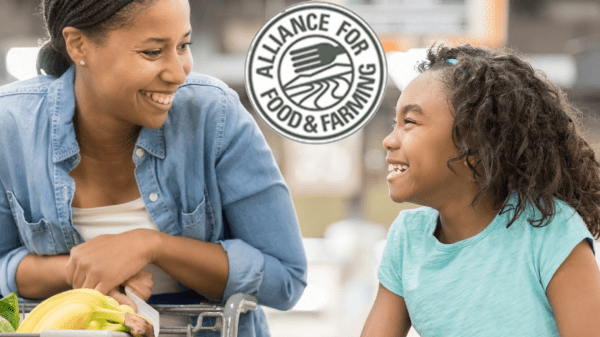This is a blog post from the Alliance for Food and Farming
The Centers for Disease Control has issued a new report regarding produce consumption and the numbers haven’t moved. Only one in 10 Americans consume enough fruits and vegetables each day, which is unchanged from previous survey levels announced in 2015.
According to the CDC (and decades of nutritional studies): “A healthy diet supports healthy immune function and helps to prevent obesity, type 2 diabetes, cardiovascular diseases, and some cancers.”
Among the many recommendations from the CDC: “Continued efforts to increase fruit and vegetable consumption by improving access and affordability in diverse community and institutional settings will help mitigate health disparities among U.S. residents.”
And yet, despite these findings, certain groups still attempt to invoke safety fears to discourage purchasing of the more affordable and accessible fruits and vegetables. But these promotional efforts may be backfiring. In a peer reviewed study, low income consumers exposed to inaccurate messaging about “high residue levels” stated they were less likely to purchase any produce – organic or conventional.
Simply put, these decades-old, fear-based tactics should be abandoned. Instead, groups sincerely concerned about improving public health should review the new CDC recommendations and apply time and resources to join others to help us move from stagnation to improvement, especially in underserved communities.
Here are more recommendations from the CDC:
• Tailored intervention efforts to increase fruit and vegetable intake are needed to reduce age, sex, racial/ethnic, and income disparities in meeting fruit and vegetable intake recommendations among U.S. adults.
• Supporting community retail programs to attract grocery stores and supermarkets to underserved communities to improve community food quality that provide resources for persons to purchase fruits and vegetables.
• Implementing nutrition incentive and produce prescription programs that provide resources for persons to purchase fruits and vegetables. (One example: Recently the retail chain Stop & Shop announced a partnership with the nonprofit About Fresh to expand access to fresh and healthy foods for people in need across New England. Through this program, participants can use prepaid debit cards “prescribed” by healthcare providers to purchase healthy food.)
Throughout the pandemic, we have learned more about the politicization and manipulation of science through promotion of misinformation and how these efforts harm public health. But groups, like the authors of the so-called “dirty dozen” list, have been doing exactly that for over 25 years by promoting inaccurate safety fears to advance an agenda.
This list has been widely discredited by the scientific and nutrition community and studies have shown its negative impact on consumers. The science, combined with the CDC report showing little progress to improve the diets of Americans, should speak to the need to evolve and move away from disparaging the more affordable and accessible fruits and vegetables.
Calling wholesome and nutritious fruits and vegetables “dirty” disrespects the farmers and farm workers who are working diligently and continually throughout the pandemic to grow, nurture and harvest these crops to keep supplies of these healthy foods moving to consumers.
Join the AFF and share how this unscientific list hurts consumers and disrespects farmers and farm workers. #NoMoreDirtyDozen.



